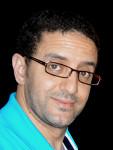Séminaire: Electroactive 2D-Materials: Growth, Properties and Applications – Pr Mohamed Siaj
Jeudi 27 avril 2017 14 h00,
Amphithéâtre de l’IEMN
Pr Mohamed Siaj, Professeur invité Université Lille 1, IUT A
Chemistry Department, Université du Québec à Montréal (UQAM)
Abstract.
Two-dimensional (2D) materials have attracted much attention due to their unique properties. Controllable synthesis of 2D materials with high quality and high efficiency is essential for their large-scale applications. In parallel to the chemical synthesis route, chemical vapor deposition (CVD) has been one of the most important techniques for the synthesis of 2D materials. For the present talk I will briefly overview our most recent work on CVD growth of graphene, boron nitride, core-shell nanoparticles@graphene and transition metal dichalcogenides (TMDs) including MoSe2 and WSe2. In parallel, I will show that the resulting electroactive nanomaterials could be used as electrodes for chemical and biosensing as well as hydrogen evolution reaction applications.
Short CV.
Mohamed Siaj holds the Canada Research Chair in 2D-Materials for Chemical and Biosensing applications since 2016. He received his Ph.D. in Chemistry at Laval University, Quebec, Canada, under the supervision of Peter McBreen, a world leader in Surface Science. Following postdoctoral training at the Colin Nuckolls group at Columbia University, New York, a leading institution in graphene research, Siaj joined the Department of Chemistry at Université de Quebec à Montréal as an assistant professor, and he is holding the rank of associate professor since 2012. He is acting as Co-Director of the Research Center on Nanomaterials and Energy (NanoQAM) and Director of Analysis of Materials and Microsystems Regrouping (RAMM), Faculty of Science, UQAM. Prof. Siaj has extensive experience in different areas of surface science and nanomaterials-based graphene. Siaj’s group activities focus on the growth, synthesis, processing and characterization of advanced nanostructured electroactive materials and their integration into chemical and biosensors.
















